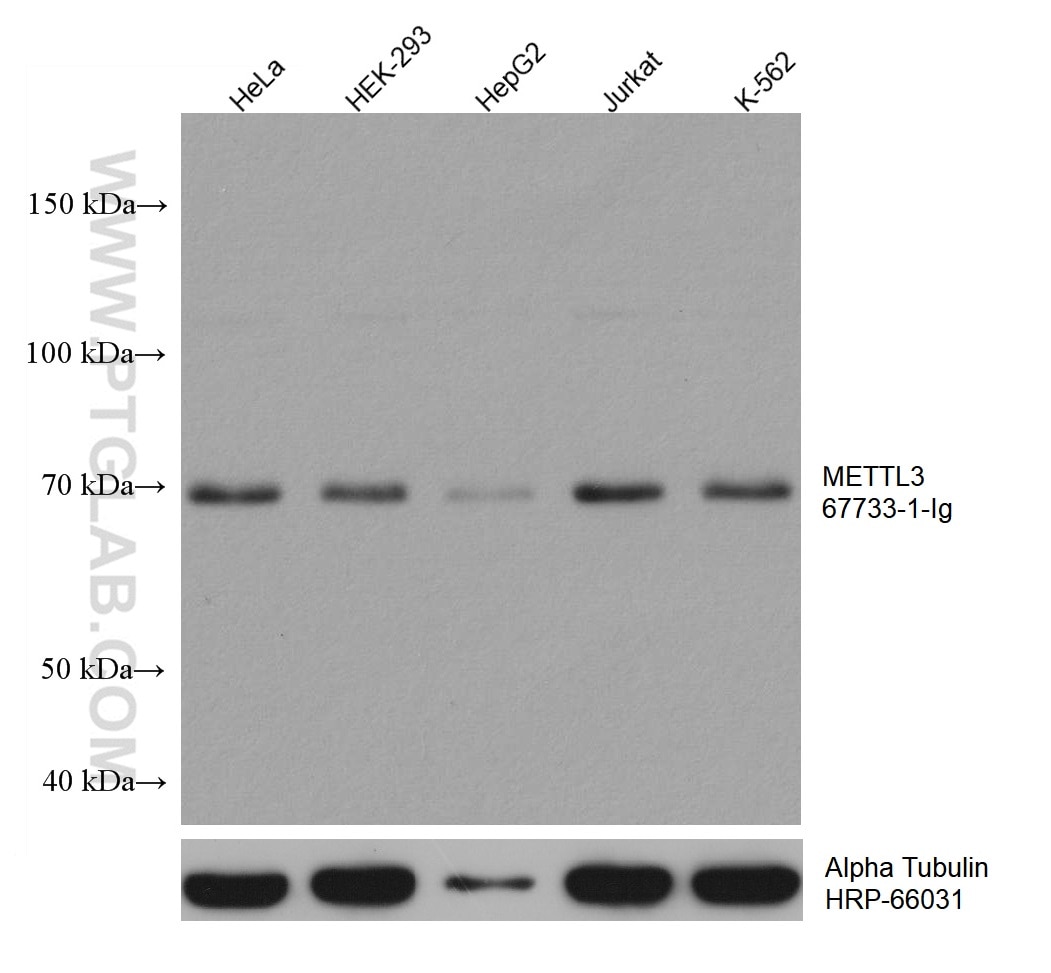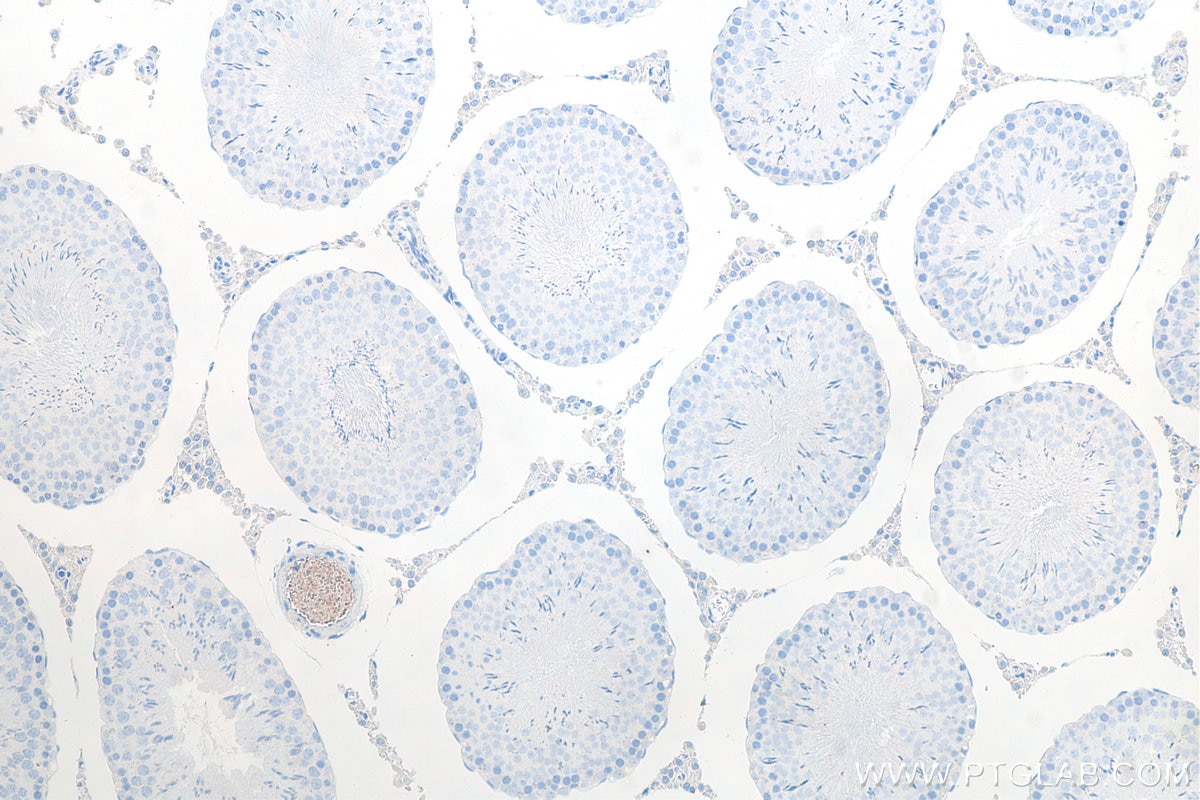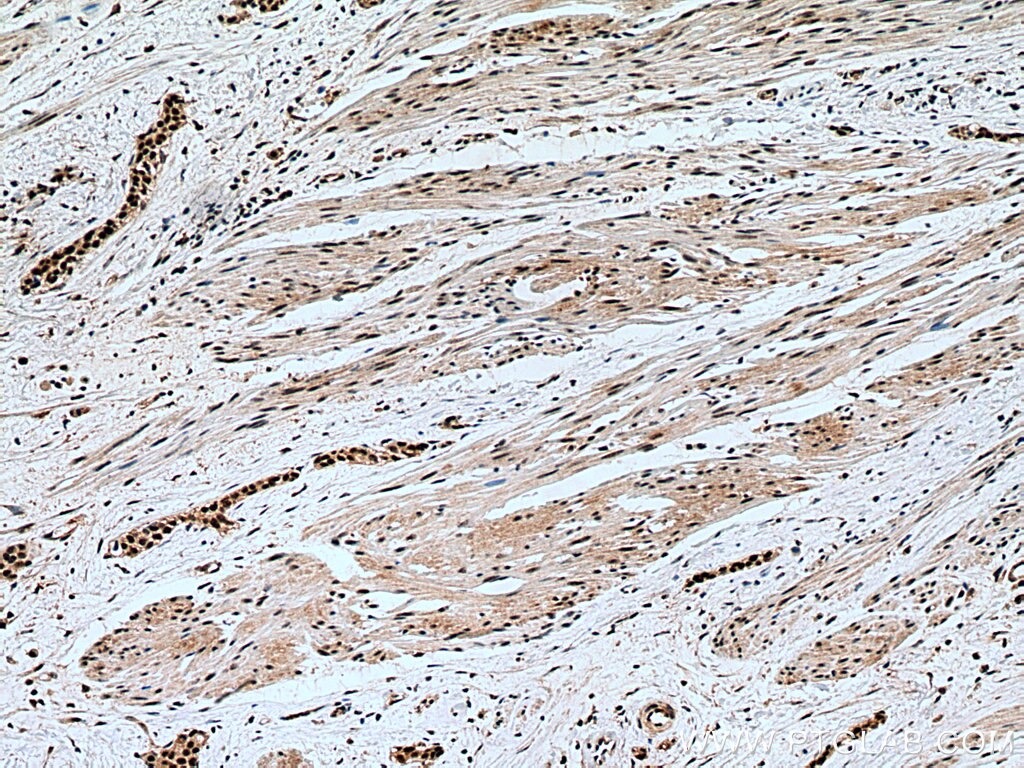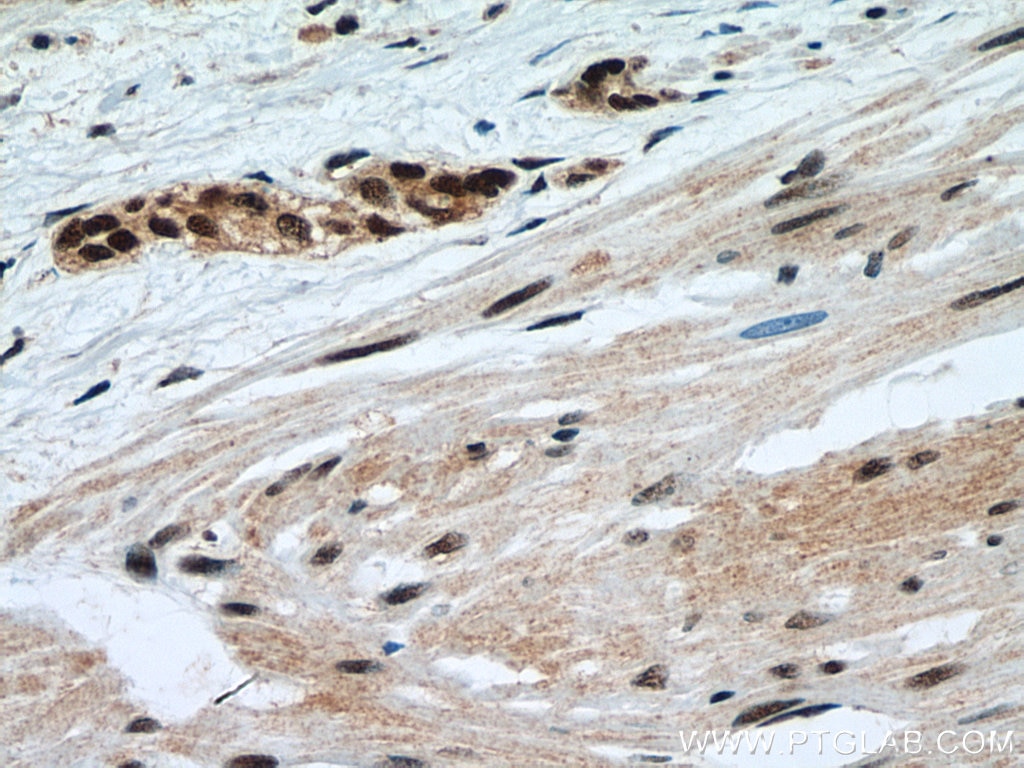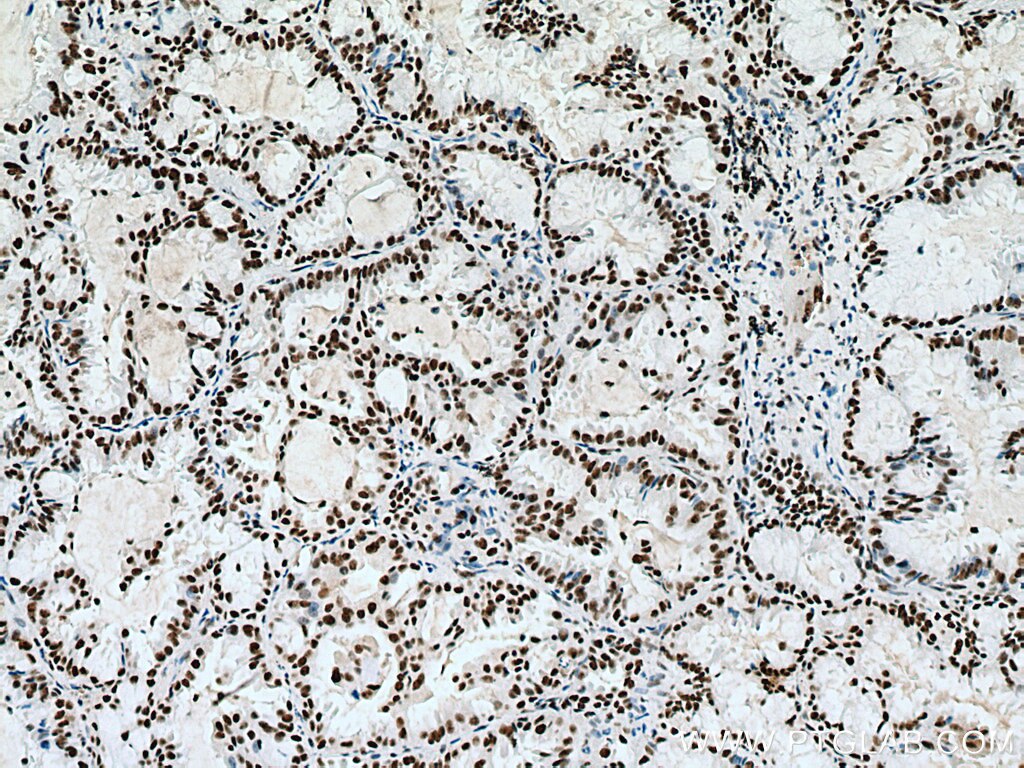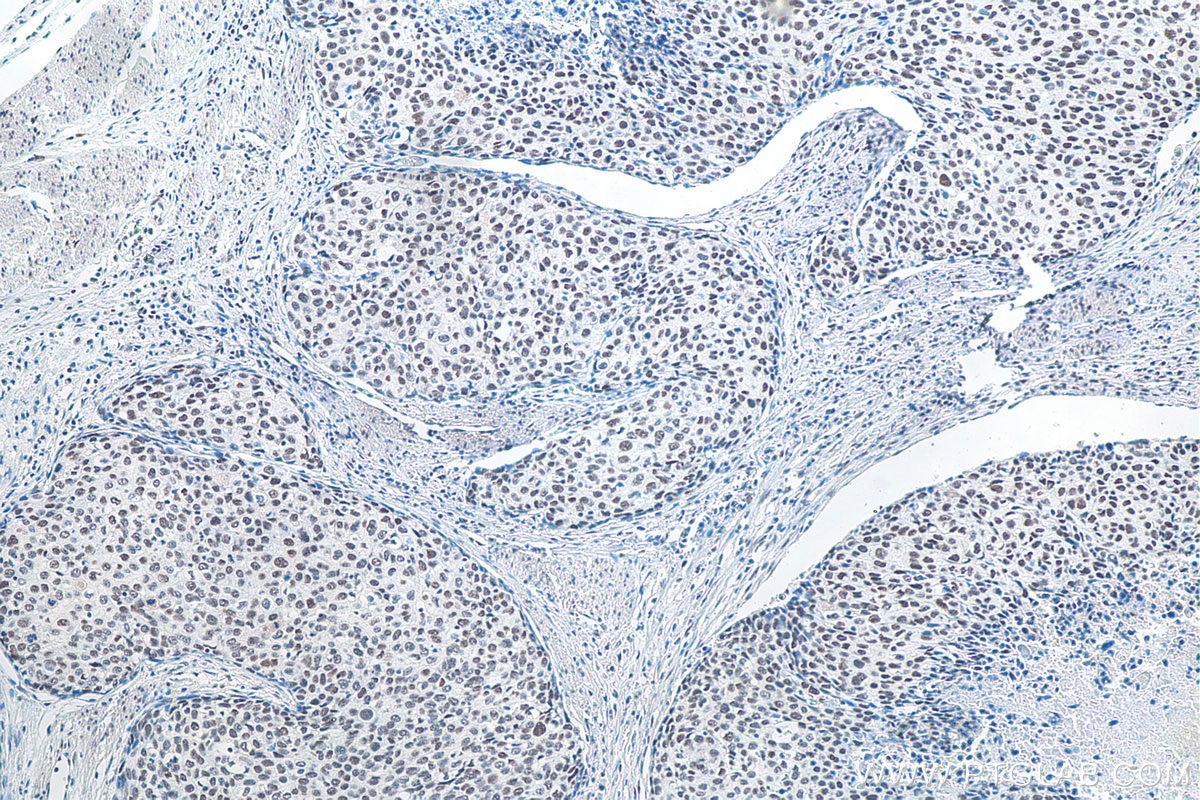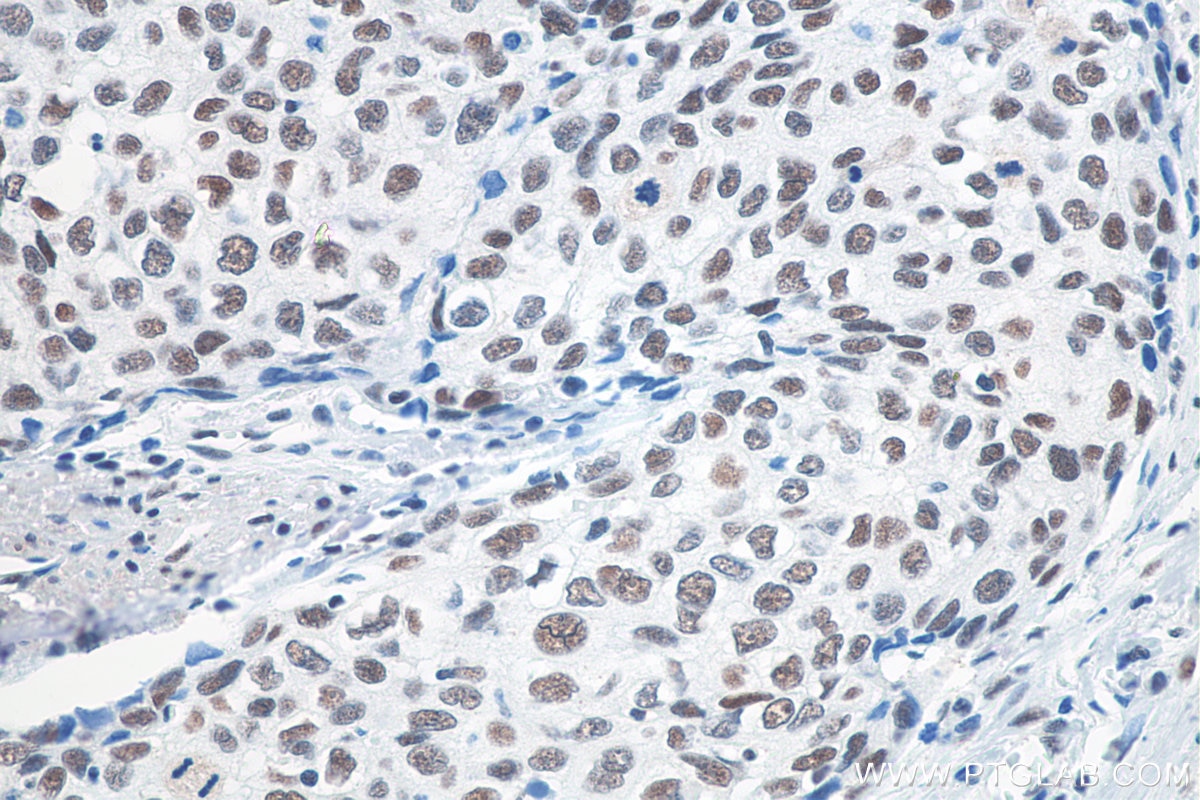Tested Applications
| Positive WB detected in | HeLa cells, A549 cells, HEK-293 cells, HepG2 cells, Jurkat cells, K-562 cells |
| Positive IHC detected in | human lung cancer tissue, human urothelial carcinoma tissue, human colon cancer tissue, human oesophagus cancer tissue Note: suggested antigen retrieval with TE buffer pH 9.0; (*) Alternatively, antigen retrieval may be performed with citrate buffer pH 6.0 |
| Positive IF-P detected in | mouse testis tissue |
| Positive FC (Intra) detected in | HEK-293 cells |
This antibody is not recommended for immunocytofluorescent assays.
Recommended dilution
| Application | Dilution |
|---|---|
| Western Blot (WB) | WB : 1:5000-1:50000 |
| Immunohistochemistry (IHC) | IHC : 1:500-1:2000 |
| Immunofluorescence (IF)-P | IF-P : 1:200-1:800 |
| Flow Cytometry (FC) (INTRA) | FC (INTRA) : 0.40 ug per 10^6 cells in a 100 µl suspension |
| It is recommended that this reagent should be titrated in each testing system to obtain optimal results. | |
| Sample-dependent, Check data in validation data gallery. | |
Published Applications
| KD/KO | See 4 publications below |
| WB | See 14 publications below |
| IHC | See 3 publications below |
| IF | See 8 publications below |
| IP | See 4 publications below |
| CoIP | See 1 publications below |
| RIP | See 1 publications below |
Product Information
67733-1-Ig targets METTL3 in WB, IHC, IF-P, FC (Intra), IP, CoIP, RIP, ELISA applications and shows reactivity with Human, mouse samples.
| Tested Reactivity | Human, mouse |
| Cited Reactivity | human, mouse, rat |
| Host / Isotype | Mouse / IgG1 |
| Class | Monoclonal |
| Type | Antibody |
| Immunogen | METTL3 fusion protein Ag7110 Predict reactive species |
| Full Name | methyltransferase like 3 |
| Calculated Molecular Weight | 64 kDa |
| Observed Molecular Weight | 65-70 kDa |
| GenBank Accession Number | BC001650 |
| Gene Symbol | METTL3 |
| Gene ID (NCBI) | 56339 |
| RRID | AB_2918502 |
| Conjugate | Unconjugated |
| Form | Liquid |
| Purification Method | Protein G purification |
| UNIPROT ID | Q86U44 |
| Storage Buffer | PBS with 0.02% sodium azide and 50% glycerol , pH 7.3 |
| Storage Conditions | Store at -20°C. Stable for one year after shipment. Aliquoting is unnecessary for -20oC storage. 20ul sizes contain 0.1% BSA. |
Background Information
METTL3 is a key S-adenosyl-L-methionine-binding subunit, which is component of a complex multicomponent enzyme that catalyzes the methylation of internal adenosine residues in eukaryotic mRNA, forming N6-methyladenosine. It contains 2 putative nuclear localization signals and 2 consensus methylation motifs. The calculated molecular weight of METTL3 is 64 kDa, but modified METTL3 is about 65-70 kDa.
Protocols
| Product Specific Protocols | |
|---|---|
| WB protocol for METTL3 antibody 67733-1-Ig | Download protocol |
| IHC protocol for METTL3 antibody 67733-1-Ig | Download protocol |
| IF protocol for METTL3 antibody 67733-1-Ig | Download protocol |
| FC protocol for METTL3 antibody 67733-1-Ig | Download protocol |
| Standard Protocols | |
|---|---|
| Click here to view our Standard Protocols |
Publications
| Species | Application | Title |
|---|---|---|
Environ Pollut RNA reading protein YTHDF2 mediates Benzo(k)fluoranthene induced male reproductive injury by regulating the stability of BCL2 | ||
EMBO Rep DDX5 inhibits inflammation by modulating m6A levels of TLR2/4 transcripts during bacterial infection | ||
Cancer Lett Therapeutic targeting m6A-guided miR-146a-5p signaling contributes to the melittin-induced selective suppression of bladder cancer. | ||
J Invest Dermatol NPTX2 Promotes EMT in Cutaneous Squamous Cell Carcinoma via Mettl3-Mediated m6A Methylation of Snail | ||
Am J Respir Cell Mol Biol The Combined Effects of Circular RNA Methylation Promote Pulmonary Fibrosis.
| ||
Transl Oncol METTL3 methylated KIF15 promotes nasopharyngeal carcinoma progression and radiation resistance by blocking ATG7-mediated autophagy through the activation of STAT3 pathway |
